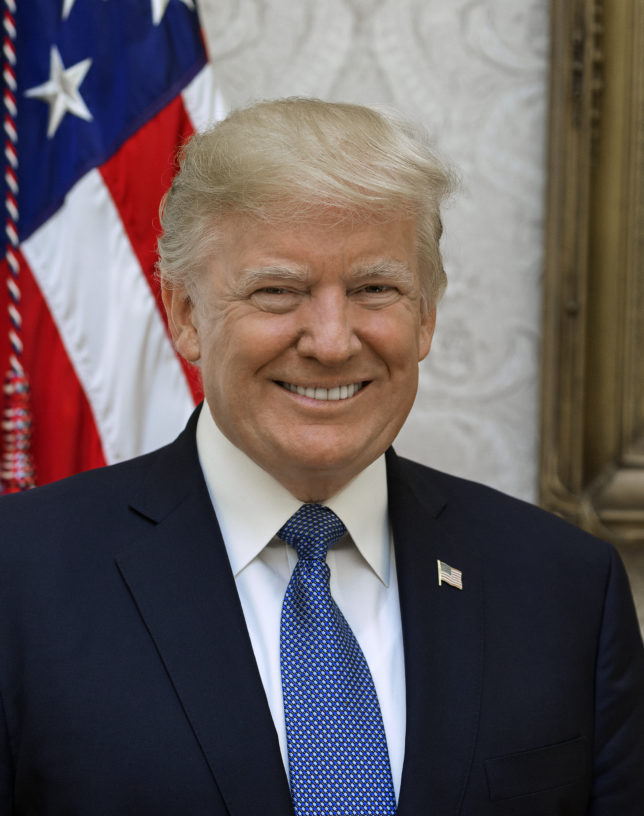The Pennsylvania House has adopted State Representative Rob Matzie’s Pollinator Week resolution. Beaver County Radio News Correspondent Sandy Giordano has more. Click on ‘play’ to hear Sandy’s report…
Category: News
Route 588 Eastvale Bridge Inspection Begins This Week in Beaver Falls
PennDOT District 11 is announcing restrictions on the bridge that carries Route 588 over the Beaver River in Eastvale Borough and the City of Beaver Falls will occur today through Wednesday, June 19 weather permitting. Single-lane closures will occur as needed in each direction on the bridge from 8 a.m. to 3 p.m. each day. Crews from TranSystems will conduct routine inspection activities. Motorists are advised to use caution, slow down, and be prepared for changing traffic patterns when traveling through the area. Work zone safety is everyone’s responsibility. Motorists can check conditions on major roadways by visiting www.511PA.com. 511PA, which is free and available 24 hours a day, provides traffic delay warnings, weather forecasts, traffic speed information and access to more than 950 traffic cameras.
State House Speaker Mike Turzai Promotes Pro-Workforce and Economy Initiative
State House Speaker Mike Turzai (R-Allegheny) was joined by a group of lawmakers in Susquehanna County on Friday to promote House Bill 1103, designed to make natural gas equally available to manufacturers throughout the Commonwealth. The bill is part of the Energize PA package of legislation, crafted to boost the impact of natural gas being extracted from wells in Pennsylvania in both the energy production and manufacturing sectors…
Graduation Party Turns Fatal in Philadelphia
PHILADELPHIA (AP) — Authorities in Philadelphia say a man has been killed and five other people were wounded in a shooting at a graduation party. It’s not yet known what sparked the shooting, which occurred around 10 p.m. Sunday. Authorities say a 24-year-old man who was shot in the back died at a hospital. Four teenagers were shot in the legs or ankles and were in stable condition. A 21-year-old man was shot in his elbow and was also stable.
Line Painting Operations All This Week In Beaver County
PennDOT District 11 is advising motorists that line painting operations on various roadways in Beaver County will occur today through Saturday, June 22, weather permitting. Work to repaint lines will occur in Beaver County from 8 a.m. to 4 p.m. each day in the following locations:
- Route 30 in various municipalities;
- Route 3010 (Holt Road) in Raccoon Township;
- Route 3021 (Patterson Road) in Raccoon Township;
- Route 3022 (Tank Farm Road) in Independence Township;
- Route 68 in various municipalities;
- Route 1028 (Big Knob Road) in New Sewickley Township; and
- Route 4020 (Dutch Ridge Road) from Tuscarawas Road to Park Road in Brighton Township.
Additionally, crews will be line painting in both directions on I-376 (Beaver Valley Expressway) in Beaver County on Saturday, June 15.
PennDOT advises motorists to exercise caution and patience, and suggests allowing at least 250 feet (13 car lengths) behind line painting equipment to avoid damage. Motorists should avoid passing the paint vehicles unless directed by a paint crew member or flag person to do so. Passing too quickly can cause damage to fresh paint lines and may result in paint on the motorist’s vehicle. Line painting vehicles normally pull over every two and one-half miles or when safety permits. Recent technological advancements on the mix of formulas have produced fast dry paints that are dry to the touch within 2 to 3 minutes. It is crucial to stay off these lines during the curing period.
Motorists who accidentally get paint on their vehicles should immediately wash the paint off with a high-pressure water stream and detergent. Dried paint can be removed with de-natured alcohol and a soft cloth. Generally, PennDOT is not responsible for paint on vehicles.
Roadway line painting is an important part of PennDOT’s highway safety initiatives. Paint lines provide direction, delineation, and guidance to motorists.
Glass beads applied on top of wet paint during the painting process provide retro reflectivity. These small, spherical beads reflect light during dark hours and periods of low visibility. As the glass beads become worn or wet, the reflectivity becomes greatly diminished resulting in reduced visibility during dark and wet hours.
Lines need repainting each year because of normal wear, tear, and weather. Winter maintenance activities such as plowing, spreading anti-skid materials, and studded tires are very abrasive to paint lines and can cause fading. Normal weathering caused by snow, rain, and ice also contribute to line reflectivity reduction.
State roads with the highest traffic volumes and safety needs are painted first. These include interstates and the National Highway System followed by secondary roadways.
PennDOT establishes painting schedules to minimize delays to motorist. On days before holidays and on Fridays, crews will focus on secondary routes to minimize inconvenience for motorists.
Motorists should use caution and be aware of changing traffic patterns when driving through the area.
Get Ready For Severe Thunderstorms, Flash Flooding In Beaver County
WEATHER FORECAST FOR MONDAY, JUNE 17TH, 2019
*** FLASH FLOOD WATCH FOR BEAVER COUNTY FROM 2:00 THIS AFTERNOON UNTIL 2AM WEDNESDAY ***
TODAY – AREAS OF PATCHY FOG THIS MORNING. RAIN THIS
MORNING. SCATTERED THUNDERSTORMS FOR THE
AFTERNOON. HIGH – 76.
TONIGHT – THUNDERSTORMS. LOW – 65.
TUESDAY – RAIN SHOWERS IN THE MORNING WITH
MORE THUNDERSTORMS DEVELOPING IN THE
AFTERNOON. HIGH – 76.
Beaver County Grants Extension to Developer For Allencrest Property
Clover Development/Lancaster Land was granted an extension on the inspection for the Allencrest property in Brighton Township. Beaver County Radio News Intern, Kristian Biega has details…
Beaver County To Begin Hotel Tax Audit
The Department of Tourism and Recreation are beginning a hotel tax audit on ten local hotels, starting today. Beaver County Radio News Intern, Christina Sainovich…
PA Hunting Licenses Go On Sale
Pennsylvania state hunting licenses are now on sale. Beaver County Radio News Intern, Christina Sainovich has more…
Trump blames Iran for tanker attacks but calls for talks
Trump blames Iran for tanker attacks but calls for talks
By ROBERT BURNS and LOLITA C. BALDOR Associated Press
WASHINGTON (AP) — President Donald Trump has blamed Iran for attacks on oil tankers near the strategic Strait of Hormuz, but he also held out hope that implicit U.S. threats to use force will yield talks with the Islamic Republic as the Pentagon considers beefing up defenses in the Persian Gulf area.
A day after explosions blew holes in two oil tankers just outside Iran’s territorial waters, rattling international oil markets, the administration seemed caught between pressure to punish Iran and reassure Washington’s Gulf Arab allies without drawing the U.S. closer to war.
“Iran did it,” Trump said Friday on Fox News Channel’s “Fox & Friends.” He didn’t offer evidence, but the U.S. military released video it said showed Iran’s Revolutionary Guard removing an unexploded mine from one of the oil tankers targeted near the Strait of Hormuz, suggesting Tehran wanted to cover its tracks.
By pointing the finger at Iran, Trump was keeping a public spotlight on an adversary he accuses of terrorism but also has invited to negotiate. The approach is similar to his diplomacy with North Korea, which has quieted talk of war but not yet achieved his goal of nuclear disarmament. Iran has shown little sign of backing down, creating uncertainty about how far the Trump administration can go with its campaign of increasing pressure through sanctions.
Iran denied any involvement in the attacks and accused Washington of waging an “Iranophobic campaign” of economic warfare.
A U.S. Navy team on Friday was aboard one of the tankers, the Japanese-owned Kokuka Courageous, collecting forensic evidence, according to a U.S. official who spoke on condition of anonymity to discuss a sensitive operation.
Apparently alluding to the U.S. video, Trump said Iran’s culpability had been “exposed.” He did not say what he intended to do about it but suggested “very tough” U.S. sanctions, including efforts to strangle Iranian oil revenues, would have the desired effect.
“They’ve been told in very strong terms we want to get them back to the table,” Trump said. Just a day earlier, the president took the opposite view, tweeting that it was “too soon to even think about making a deal” with Iran’s leaders. “They are not ready, and neither are we!”
Trump last year withdrew the United States from an international agreement to limit Iran’s nuclear program that was signed in 2015 under his predecessor, President Barack Obama. He has since then re-instated economic sanctions aimed at compelling the Iranians to return to the negotiating table. Just last month the U.S. ended waivers that allowed some countries to continue buying Iranian oil, a move that is starving Iran of oil income and that coincided with what U.S. officials called a surge in intelligence pointing to Iranian preparations for attacks against U.S. forces and interests in the Gulf region.
In response to those intelligence warnings, the U.S. on May 5 announced it was accelerating the deployment of the USS Abraham Lincoln aircraft carrier battle group to the Gulf region. It also sent four nuclear-capable B-52 bombers to Qatar and has beefed up its defenses in the region by deploying more Patriot air defense systems.
Officials said that Pentagon deliberations about possibly sending more military resources to the region, including more Patriot missile batteries, could be accelerated by Thursday’s dramatic attack on the oil tankers.
At the Pentagon, acting Defense Secretary Patrick Shanahan said Iran is not just a U.S. problem. He said the U.S. goal is to “build international consensus to this international problem,” and to ensure that U.S. military commanders in the region get the resources and support they need.
In remarks to reporters later, Shanahan noted the commercial and strategic importance of the Strait of Hormuz, through which passes about 20 percent of the world’s oil.
“So, we obviously need to make contingency plans should the situation deteriorate,” he said.
Other administration officials said the U.S. is re-evaluating its presence in the region and will discuss the matter with allies before making decisions. The officials, who briefed reporters on condition of anonymity, said Thursday the U.S. is looking at all options to ensure that maritime traffic in the region is safe and that international commerce, particularly through the Strait of Hormuz, is not disrupted. One option, they said, is for U.S. and allied ships to accompany vessels through the strait, noting that this tactic has been used in the past. They said there is no timeline for any decisions.
Rep. Elissa Slotkin, D-Mich., said that providing naval escorts through the Strait of Hormuz is an option, but, “I don’t think it’s a sustainable option because of the amount of traffic.” She said tanker warfare in the Persian Gulf has historically been a problem, and she wouldn’t be opposed to the U.S. having a more visible presence in the region.
Slotkin, a former senior policy adviser at the Pentagon, said she is concerned that the Trump administration does not have a clear strategy on Iran. She said it’s difficult to deter Iran without provoking additional violence, adding, “I don’t believe this administration is capable of walking such a deft, fine line.”
In ticking off a list of Iranian acts of “unprovoked aggression,” including Thursday’s oil tanker attacks, Secretary of State Mike Pompeo added a surprise accusation. He asserted on Thursday that a late May car bombing of a U.S. convoy in Kabul, Afghanistan, was among a series of threats or attacks by Iran and its proxies against American and allies interests. At the time, the Taliban claimed credit for the attack, with no public word of Iranian involvement.
Pompeo’s inclusion of the Afghanistan attack in his list of six Iranian incidents has raised eyebrows in Congress, where he and other U.S. officials have suggested that the administration would be legally justified in taking military action against Iran under the 2001 Authorization of Military Force, or AUMF. In that law, Congress gave then-President George W. Bush authority to retaliate against al-Qaida and the Taliban for the Sept. 11, 2001, terrorist attacks. It has subsequently been used to allow military force against extremists elsewhere, from the Philippines to Syria.
As the world awaited Washington’s next move, analysts said it was difficult to sort out the conflicting claims.
“There are few actors in the world that have less credibility than Donald Trump and the Iranian regime, so even U.S. allies at the moment are confused about what happened,” said Karim Sadjadpour, an Iran expert at the Carnegie Endowment for International Peace. He said the “tremendous mistrust” of both Trump and Iran has made “the biggest priority for most countries to simply avoid conflict or further escalation.”
At the same time, Iranian Ayatollah Ali Khamenei is in a difficult position, Sadjadpour said. “If he didn’t respond to Trump’s provocations, he would risk looking like a paper tiger and projecting weakness. But if he responds overly aggressive to Trump he potentially destabilizes his own rule and his own regime. That’s why we’ve seen Iran calibrate its escalation.”
—
AP writers Zeke Miller and Matthew Lee contributed to this report.










